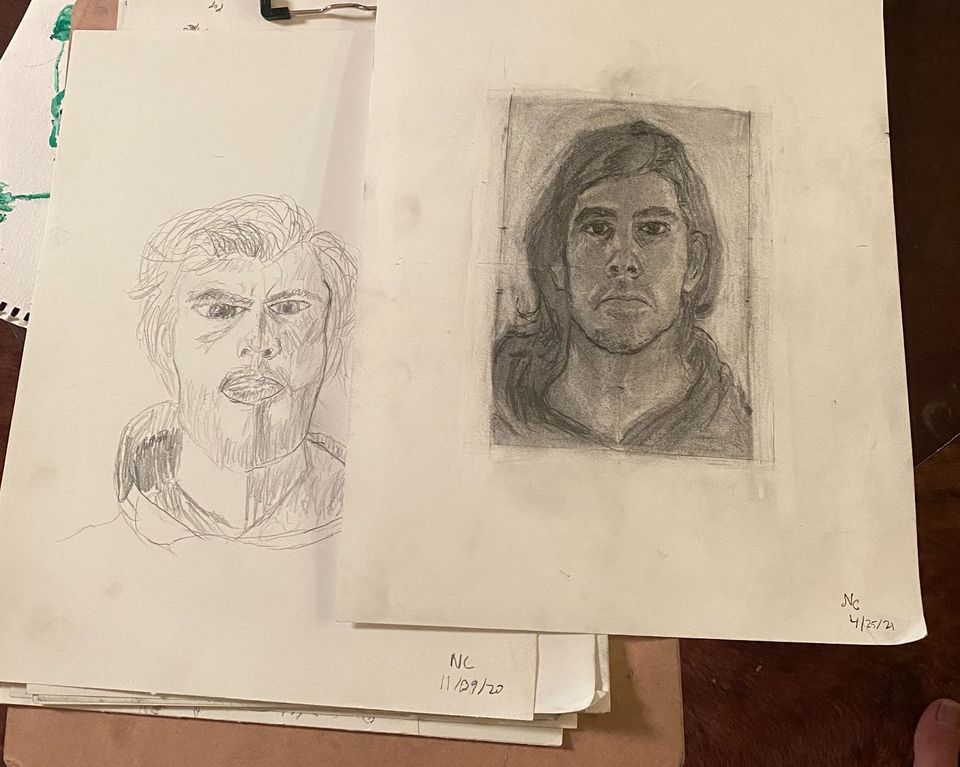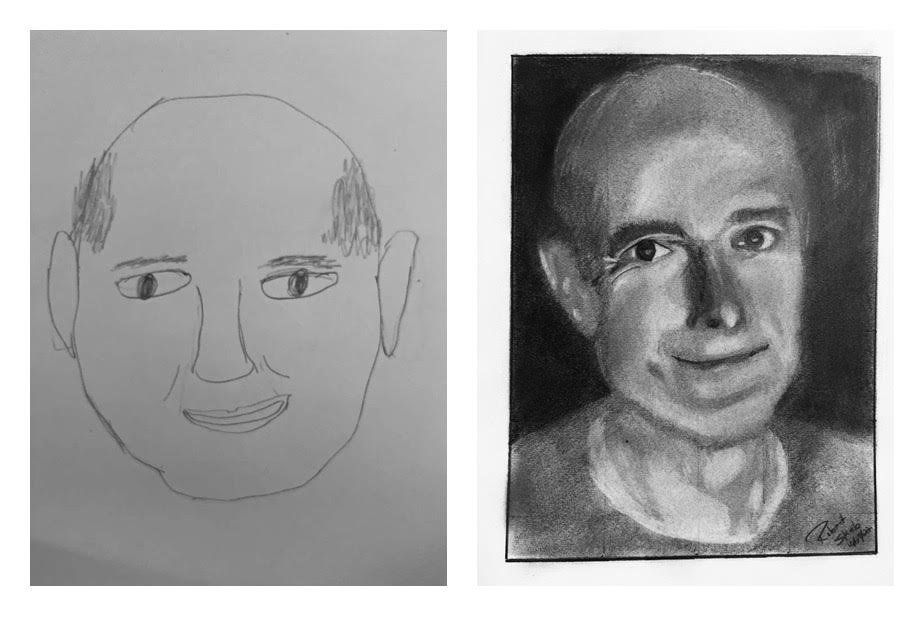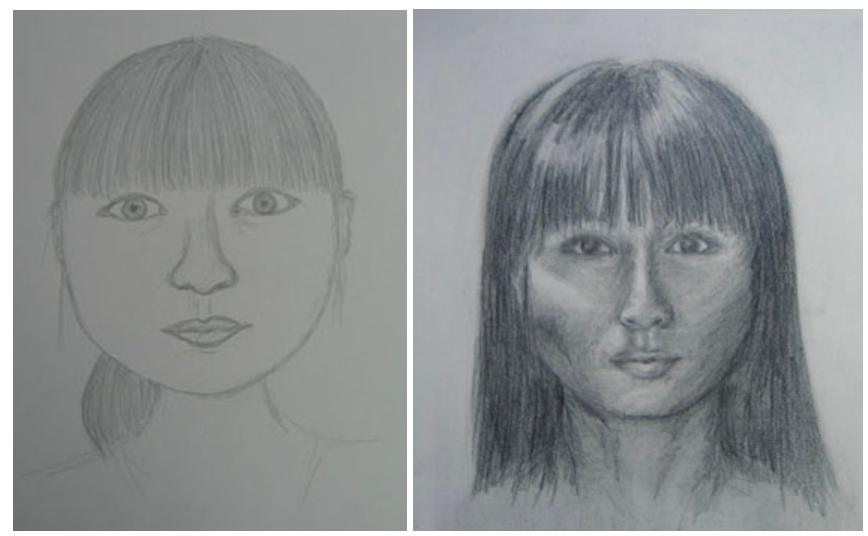What learning how to draw taught me about the future (and what it has to do with corporate culture)

Welcome to my New Year's blog post -- I'm a little late to the party but better late than never. I don't have any specific 2023 in/out lists, predictions, or goals to share, but I wanted to speak more generally about the cycles of goal setting and the state of tech.
2022 was a continuation of the sci-fi plot line that is our current reality, with the rumblings of tectonic shifts in geopolitics, economic fundamentals, and technological progress, which the world is still bracing for.
In wake of this, I moved on from my job of four years, went to four countries (and another planet by attending Burning Man), and broadly re-prioritized my life toward my family, my community and my interests during a stark shift in the tone of the tech world and a hard rebalancing of labor relations.
On the surface, these weren't super practical professional choices. However, it's something that was an extension of the last two years of New Years reflection and something I felt was the right timing for me, both on a personal level and based on my perspective of the current state of technology and it's implications – which is the context of this blog.
On the topic of New Years resolutions: Looking back on 2022, the #1 “How To” query on Google was “How to Draw”, which is the perennial top how-to search since Google's inception.
In 2021, this was the specific goal I resolved to achieve, and I completed Drawing on The Right Side of the Brain, a classic “how to draw” book. It took me about 20-30 hours of casual drawing over 5 months to finish.
The book starts and ends with a self-portrait, with lessons and discussion in the middle. The results were, in my opinion, a miracle in relation to my expectations and perception of my own artistic ability. However, a cursory look at the book's website shows that my progress was the norm.
The essential thesis of the book is that people are naturally creative, but that this creativity is often blocked by the left hemisphere of the brain, which is responsible for logical and analytical thinking. The author argues that the left hemisphere tends to dominate our thinking and that it is necessary to engage the right hemisphere of the brain, which is responsible for creativity and holistic thinking, in order to unlock our creative potential. She presents a number of techniques for shifting the brain's dominant mode of thinking from the left hemisphere to the right in order to facilitate creative thinking, and by following the program we see this manifest in leaps and bounds via rapid drawing progress.
Abstracted out, we see this sort of tension between creative and analytical thinking in individuals play out in organizational hierarchy. For instance, the normal order of operations for software and marketing teams is first to brainstorm ideas (right brained thinking) and then to apply layers of revision, prioritization and executive judgment before execution (left brain thinking). In this order of operations, creative thought is ultimately subservient to the analytical. The greater the level of difficulty, or complexity of interdependencies, or risk in implementation, the greater the level of judgment is typically necessary – and in my experience, the more creative thinking is discouraged, which explains the rigid and operational thinking that makes up larger organizations and their corporate controllers.



Typical results for Drawing on the Right Side of The Brain 5 day intensive course. via drawright.com
It brought me deep joy to complete Drawing on the Right Side of the Brain, but also deep curiosity to know that the gap between society’s creative dreams (e.g., top search history) and creative realities was so thin, which set the stage for my 2022.
This is perhaps the explanation behind this year's explosive growth in Generative AI — that it makes accessible the latent creative dreams of the world which feel just out of reach.
There is a contingency of folks who see rapid proliferation of Generative AI as deeply disturbing or threatening to creatives. But perhaps a more optimistic perspective, is that these tools will empower confidence to close the larger perceived gaps that people have about their creative potential, and give unprecedented leverage to creative thinkers.
AI is turning an entire generation into artists and will turn the artists of this generation into disneys and the disneys into gods
— Ronen▼ 📍NYC (@RonenV) December 17, 2022
it's a shift like when everyone learned to read after the printing press
In terms of implications on the corporate world: cloud computing, no code and platform solutions, remote work, and increased access to capital have already made creating a start-up easier than ever before. But generative technology makes the promise that producing relatively complex products with little-to-no technical ability is tangibly on the horizon, which I think would fundamentally shift the balance of power from operational ability toward creative ability in tech.
While I don’t have many bold predictions for 2023, my perspective of the future is that it is broadly more creative, democratic, egalitarian and entrepreneurial. I see a world of smaller niches able to be filled by smaller companies, built on top of more robust platform layers and startup infrastructure.
The raw joy of drawing in '21 was in-itself enough to make me more interested in developing myself creatively in '22. But the thought that the balance of power between a broadly operational and a broadly creative world sits on razors edge stuck with me, and I imagined a world in which the momentum of technology swung the pendulum strongly in favor of the creative thinker. As a result I've made a vow of closing the gaps between my creative dreams and reality in my own life, both in this year and beyond, and is the reason for the larger changes I've made.
As you consider your goals for the New Year, I invite you consider which dreams have been left unrealized as well, and what steps you can take to develop creatively. Not only because I see this as pivotal for thriving professionally in an accelerating world, but simply because it feels great to suspend self-judgment and the judgment of others to create things.